Sidi Lu
On Compositionality and Improved Training of NADO
Jun 20, 2023Abstract:NeurAlly-Decomposed Oracle (NADO) is a powerful approach for controllable generation with large language models. Differentiating from finetuning/prompt tuning, it has the potential to avoid catastrophic forgetting of the large base model and achieve guaranteed convergence to an entropy-maximized closed-form solution without significantly limiting the model capacity. Despite its success, several challenges arise when applying NADO to more complex scenarios. First, the best practice of using NADO for the composition of multiple control signals is under-explored. Second, vanilla NADO suffers from gradient vanishing for low-probability control signals and is highly reliant on the forward-consistency regularization. In this paper, we study the aforementioned challenges when using NADO theoretically and empirically. We show we can achieve guaranteed compositional generalization of NADO with a certain practice, and propose a novel alternative parameterization of NADO to perfectly guarantee the forward-consistency. We evaluate the improved training of NADO, i.e. NADO++, on CommonGen. Results show that NADO++ improves the effectiveness of the algorithm in multiple aspects.
Open-Domain Text Evaluation via Meta Distribution Modeling
Jun 20, 2023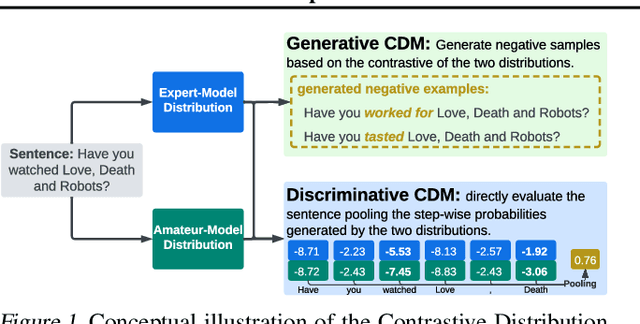
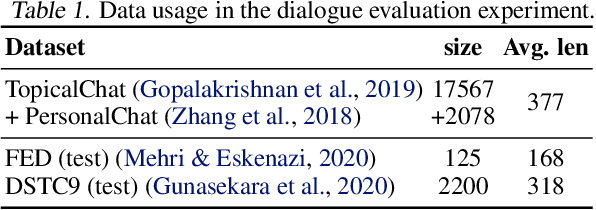
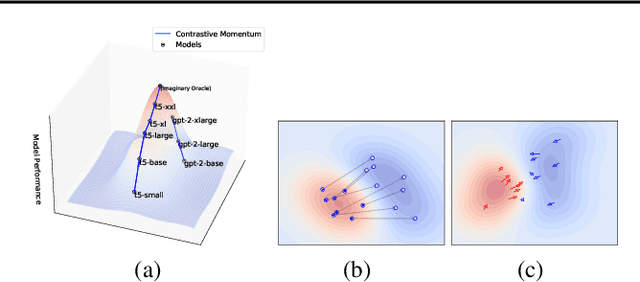
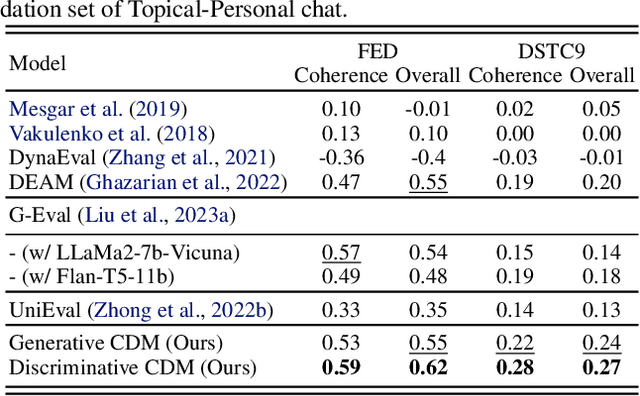
Abstract:Recent advances in open-domain text generation models powered by large pre-trained language models (LLMs) have achieved remarkable performance. However, evaluating and controlling these models for desired attributes remains a challenge, as traditional reference-based metrics such as BLEU, ROUGE, and METEOR are insufficient for open-ended generation tasks. Similarly, while trainable discriminator-based evaluation metrics show promise, obtaining high-quality training data is a non-trivial task. In this paper, we introduce a novel approach to evaluate open-domain generation - the Meta-Distribution Methods (MDM). Drawing on the correlation between the rising parameter counts and the improving performance of LLMs, MDM creates a mapping from the contrast of two probabilistic distributions -- one known to be superior to the other -- to quality measures, which can be viewed as a distribution of distributions i.e. Meta-Distribution. We investigate MDM for open-domain text generation evaluation under two paradigms: 1) \emph{Generative} MDM, which leverages the Meta-Distribution Methods to generate in-domain negative samples for training discriminator-based metrics; 2) \emph{Discriminative} MDM, which directly uses distribution discrepancies between two language models for evaluation. Our experiments on multi-turn dialogue and factuality in abstractive summarization demonstrate that MDMs correlate better with human judgment than existing automatic evaluation metrics on both tasks, highlighting the strong performance and generalizability of such methods.
Controllable Text Generation with Neurally-Decomposed Oracle
May 27, 2022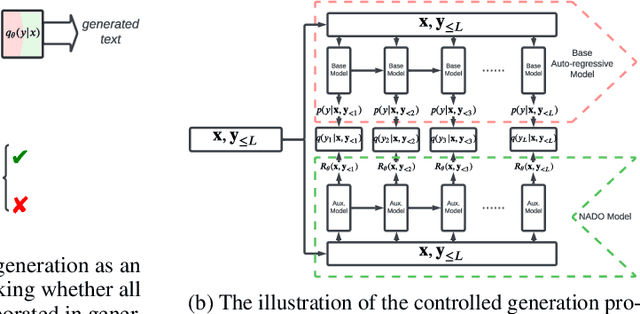
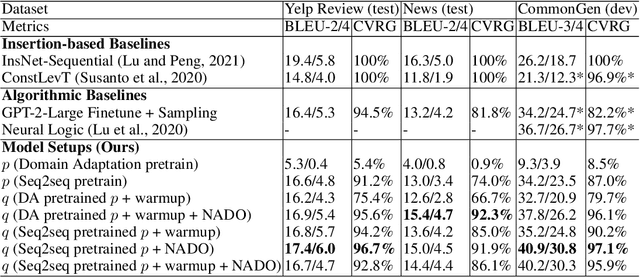
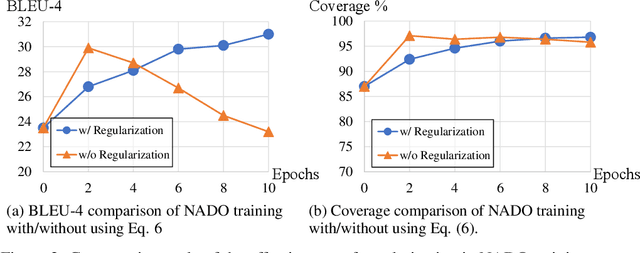

Abstract:We propose a general and efficient framework to control auto-regressive generation models with NeurAlly-Decomposed Oracle (NADO). Given a pre-trained base language model and a sequence-level boolean oracle function, we propose to decompose the oracle function into token-level guidance to steer the base model in text generation. Specifically, the token-level guidance is approximated by a neural model trained with examples sampled from the base model, demanding no additional auxiliary labeled data. We present the closed-form optimal solution to incorporate the token-level guidance into the base model for controllable generation. We further provide a theoretical analysis of how the approximation quality of NADO affects the controllable generation results. Experiments conducted on two applications: (1) text generation with lexical constraints and (2) machine translation with formality control demonstrate that our framework efficiently guides the base model towards the given oracle while maintaining high generation quality.
Reinforcement Learning for Adaptive Video Compressive Sensing
May 18, 2021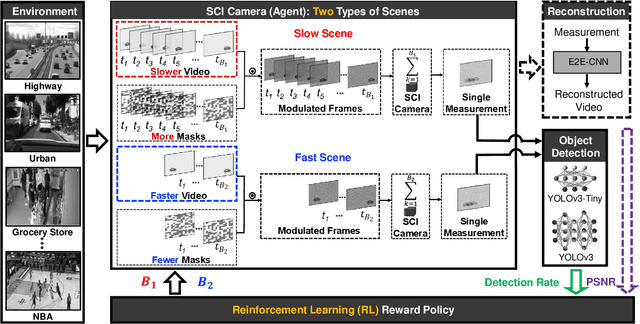
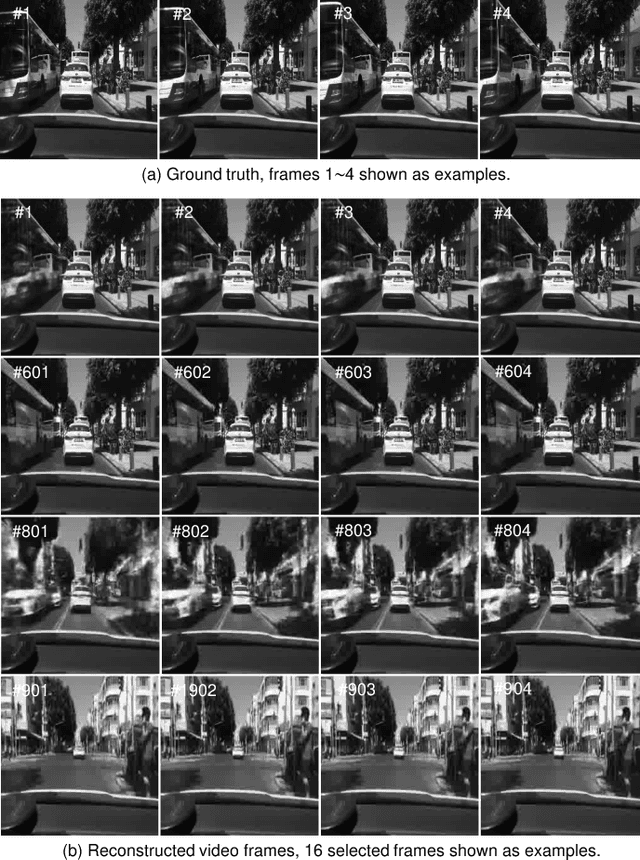
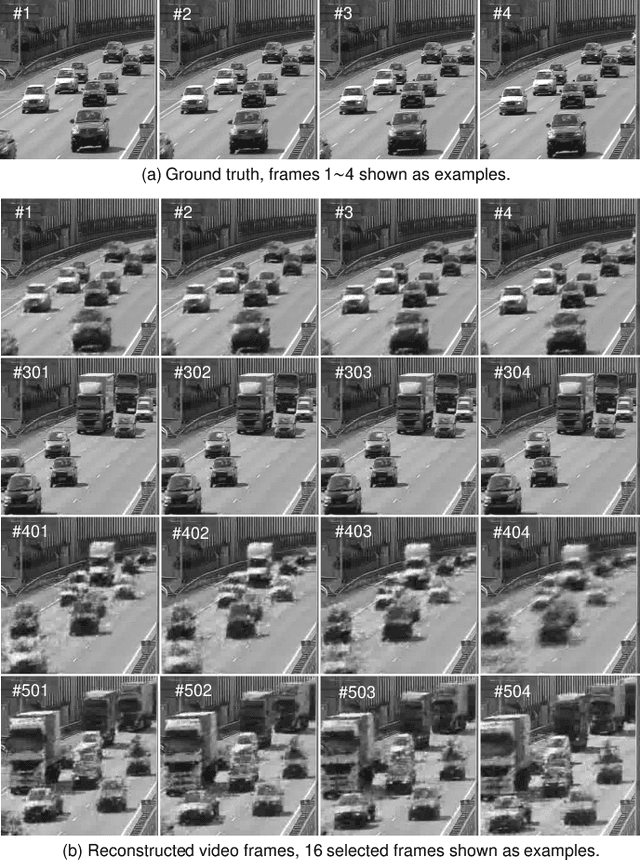
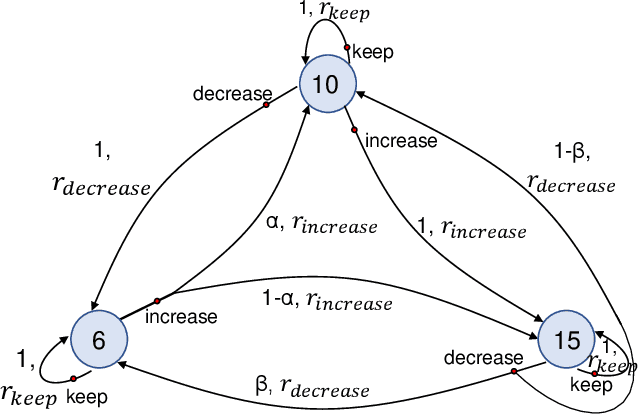
Abstract:We apply reinforcement learning to video compressive sensing to adapt the compression ratio. Specifically, video snapshot compressive imaging (SCI), which captures high-speed video using a low-speed camera is considered in this work, in which multiple (B) video frames can be reconstructed from a snapshot measurement. One research gap in previous studies is how to adapt B in the video SCI system for different scenes. In this paper, we fill this gap utilizing reinforcement learning (RL). An RL model, as well as various convolutional neural networks for reconstruction, are learned to achieve adaptive sensing of video SCI systems. Furthermore, the performance of an object detection network using directly the video SCI measurements without reconstruction is also used to perform RL-based adaptive video compressive sensing. Our proposed adaptive SCI method can thus be implemented in low cost and real time. Our work takes the technology one step further towards real applications of video SCI.
On Efficient Training, Controllability and Compositional Generalization of Insertion-based Language Generators
Mar 01, 2021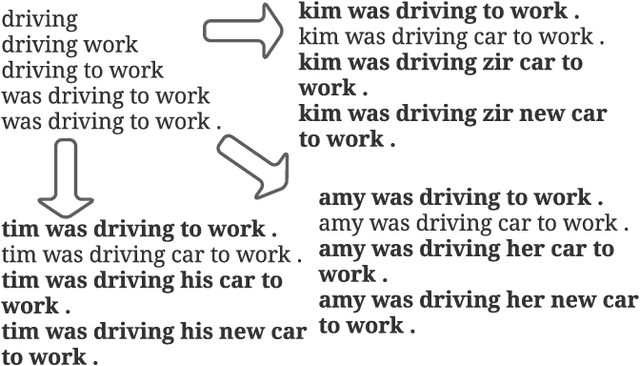



Abstract:Auto-regressive language models with the left-to-right generation order have been a predominant paradigm for language generation. Recently, out-of-order text generation beyond the traditional left-to-right paradigm has attracted extensive attention, with a notable variation of insertion-based generation, where a model is used to gradually extend the context into a complete sentence purely with insertion operations. However, since insertion operations disturb the position information of each token, it is often believed that each step of the insertion-based likelihood estimation requires a bi-directional \textit{re-encoding} of the whole generated sequence. This computational overhead prohibits the model from scaling up to generate long, diverse texts such as stories, news articles, and reports. To address this issue, we propose InsNet, an insertion-based sequence model that can be trained as efficiently as traditional transformer decoders while maintaining the same performance as that with a bi-directional context encoder. We evaluate InsNet on story generation and CleVR-CoGENT captioning, showing the advantages of InsNet in several dimensions, including computational costs, generation quality, the ability to perfectly incorporate lexical controls, and better compositional generalization.
Computing Systems for Autonomous Driving: State-of-the-Art and Challenges
Sep 30, 2020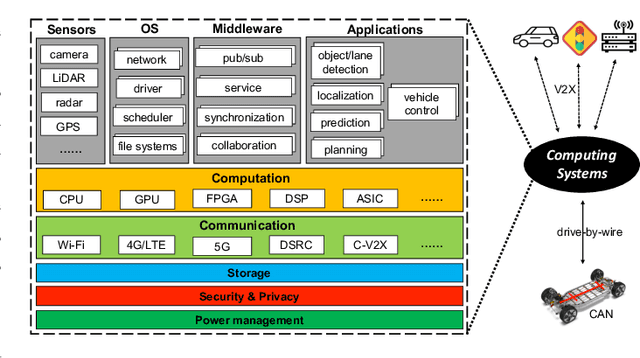
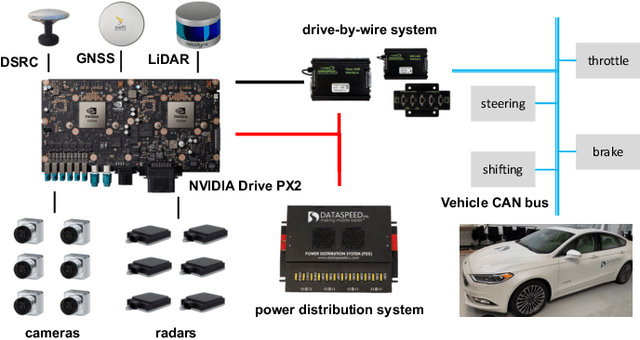


Abstract:The recent proliferation of computing technologies, e.g., sensors, computer vision, machine learning, hardware acceleration, and the broad deployment of communication mechanisms, e.g., DSRC, C-V2X, 5G, have pushed the horizon of autonomous driving, which automates the decision and control of vehicles by leveraging the perception results based on multiple sensors. The key to the success of these autonomous systems is making a reliable decision in a real-time fashion. However, accidents and fatalities caused by early deployed autonomous vehicles arise from time to time. The real traffic environment is too complicated for the current autonomous driving computing systems to understand and handle. In this paper, we present the state-of-the-art computing systems for autonomous driving, including seven performance metrics and nine key technologies, followed by eleven challenges and opportunities to realize autonomous driving. We hope this paper will gain attention from both the computing and automotive communities and inspire more research in this direction.
Neurally-Guided Structure Inference
Jun 17, 2019
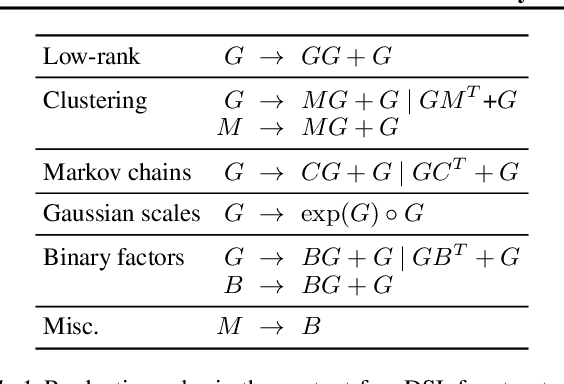
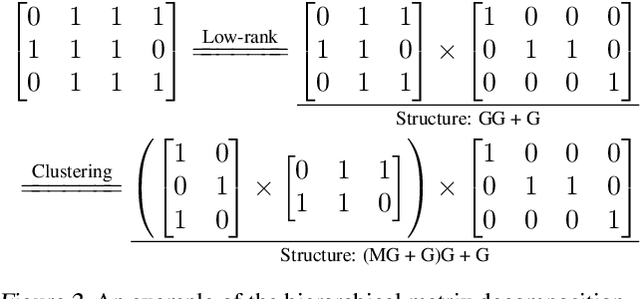
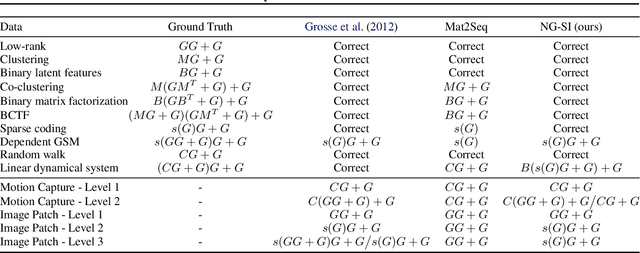
Abstract:Most structure inference methods either rely on exhaustive search or are purely data-driven. Exhaustive search robustly infers the structure of arbitrarily complex data, but it is slow. Data-driven methods allow efficient inference, but do not generalize when test data have more complex structures than training data. In this paper, we propose a hybrid inference algorithm, the Neurally-Guided Structure Inference (NG-SI), keeping the advantages of both search-based and data-driven methods. The key idea of NG-SI is to use a neural network to guide the hierarchical, layer-wise search over the compositional space of structures. We evaluate our algorithm on two representative structure inference tasks: probabilistic matrix decomposition and symbolic program parsing. It outperforms data-driven and search-based alternatives on both tasks.
* Proceedings of the 36th International Conference on Machine Learning (ICML 2019). First two authors contributed equally. Project page: http://ngsi.csail.mit.edu
OpenEI: An Open Framework for Edge Intelligence
Jun 05, 2019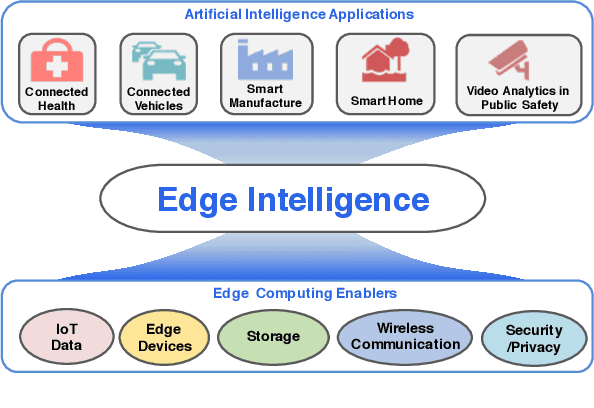
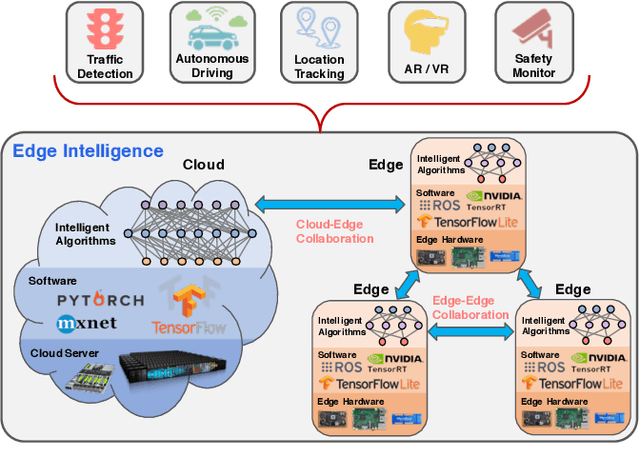
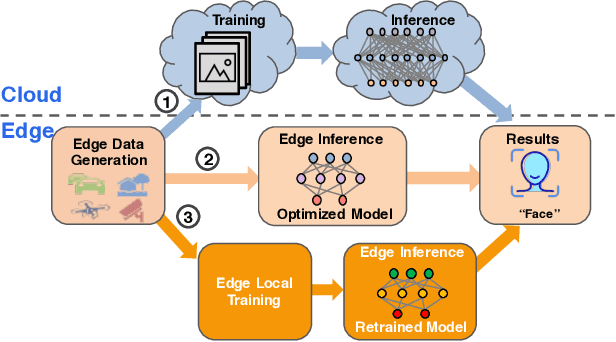
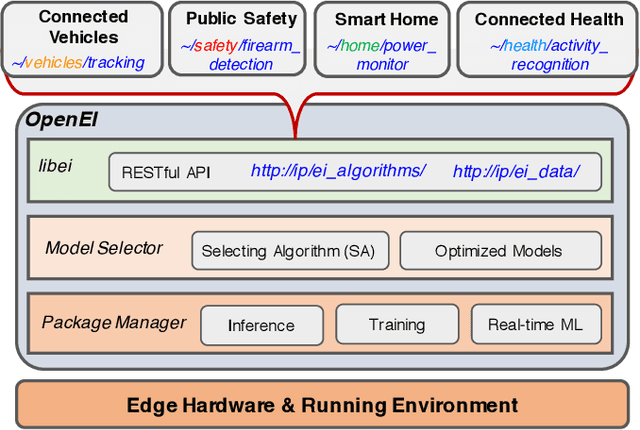
Abstract:In the last five years, edge computing has attracted tremendous attention from industry and academia due to its promise to reduce latency, save bandwidth, improve availability, and protect data privacy to keep data secure. At the same time, we have witnessed the proliferation of AI algorithms and models which accelerate the successful deployment of intelligence mainly in cloud services. These two trends, combined together, have created a new horizon: Edge Intelligence (EI). The development of EI requires much attention from both the computer systems research community and the AI community to meet these demands. However, existing computing techniques used in the cloud are not applicable to edge computing directly due to the diversity of computing sources and the distribution of data sources. We envision that there missing a framework that can be rapidly deployed on edge and enable edge AI capabilities. To address this challenge, in this paper we first present the definition and a systematic review of EI. Then, we introduce an Open Framework for Edge Intelligence (OpenEI), which is a lightweight software platform to equip edges with intelligent processing and data sharing capability. We analyze four fundamental EI techniques which are used to build OpenEI and identify several open problems based on potential research directions. Finally, four typical application scenarios enabled by OpenEI are presented.
CoT: Cooperative Training for Generative Modeling of Discrete Data
Aug 21, 2018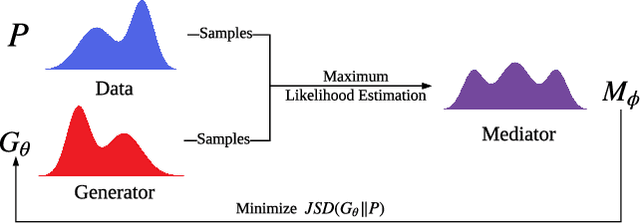


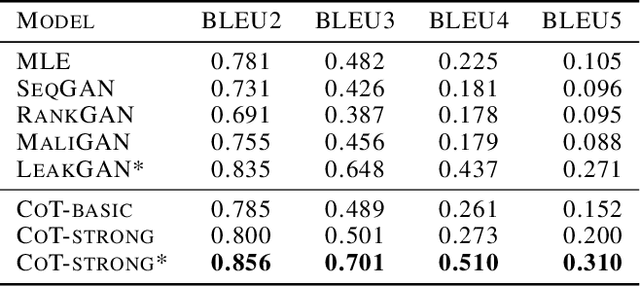
Abstract:We propose Cooperative Training (CoT) for training generative models that measure a tractable density for discrete data. CoT coordinately trains a generator $G$ and an auxiliary predictive mediator $M$. The training target of $M$ is to estimate a mixture density of the learned distribution $G$ and the target distribution $P$, and that of $G$ is to minimize the Jensen-Shannon divergence estimated through $M$. CoT achieves independent success without the necessity of pre-training via Maximum Likelihood Estimation or involving high-variance algorithms like REINFORCE. This low-variance algorithm is theoretically proved to be unbiased for both generative and predictive tasks. We also theoretically and empirically show the superiority of CoT over most previous algorithms in terms of generative quality and diversity, predictive generalization ability and computational cost.
Neural Text Generation: Past, Present and Beyond
Mar 15, 2018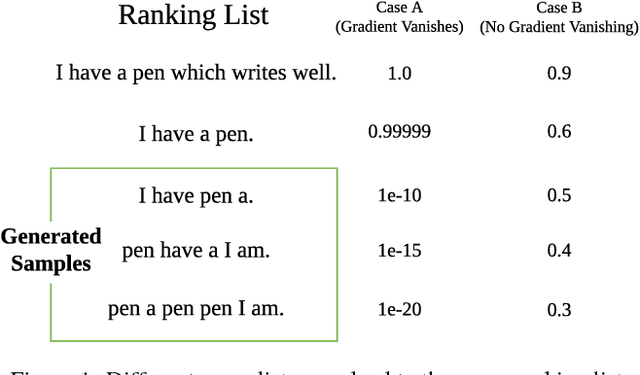
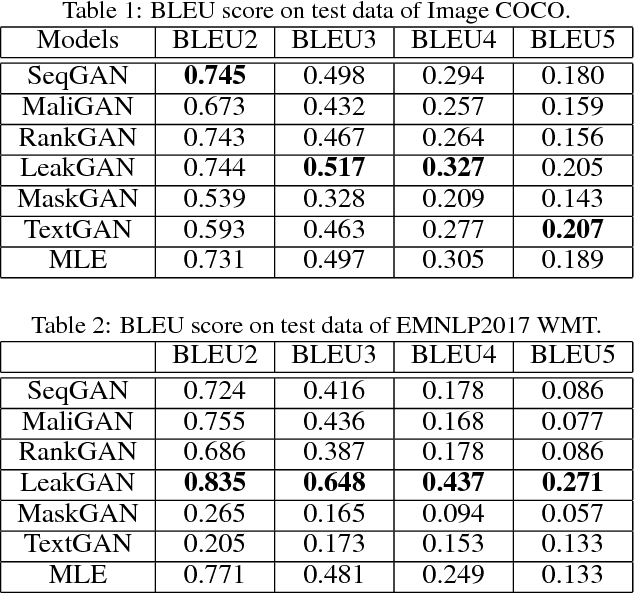
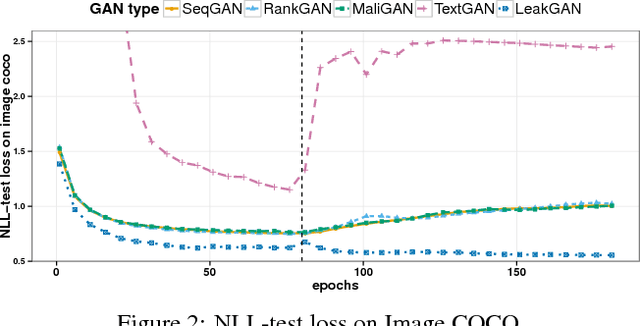
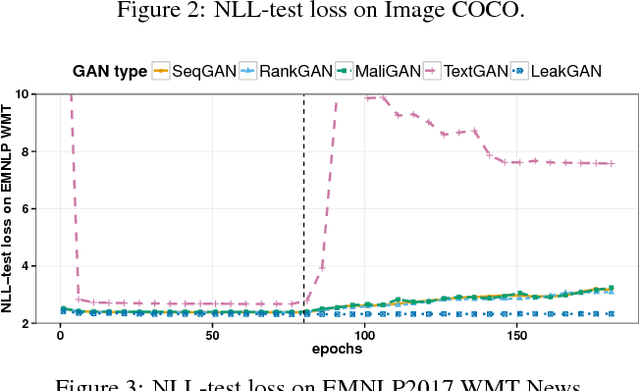
Abstract:This paper presents a systematic survey on recent development of neural text generation models. Specifically, we start from recurrent neural network language models with the traditional maximum likelihood estimation training scheme and point out its shortcoming for text generation. We thus introduce the recently proposed methods for text generation based on reinforcement learning, re-parametrization tricks and generative adversarial nets (GAN) techniques. We compare different properties of these models and the corresponding techniques to handle their common problems such as gradient vanishing and generation diversity. Finally, we conduct a benchmarking experiment with different types of neural text generation models on two well-known datasets and discuss the empirical results along with the aforementioned model properties.
 Add to Chrome
Add to Chrome Add to Firefox
Add to Firefox Add to Edge
Add to Edge